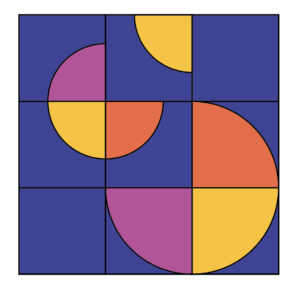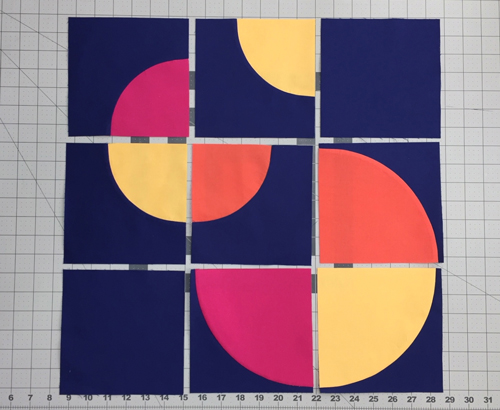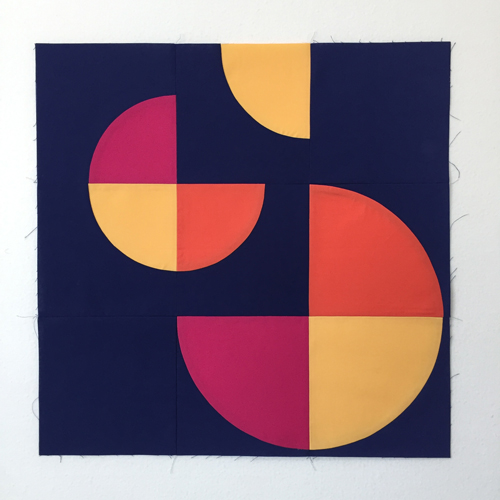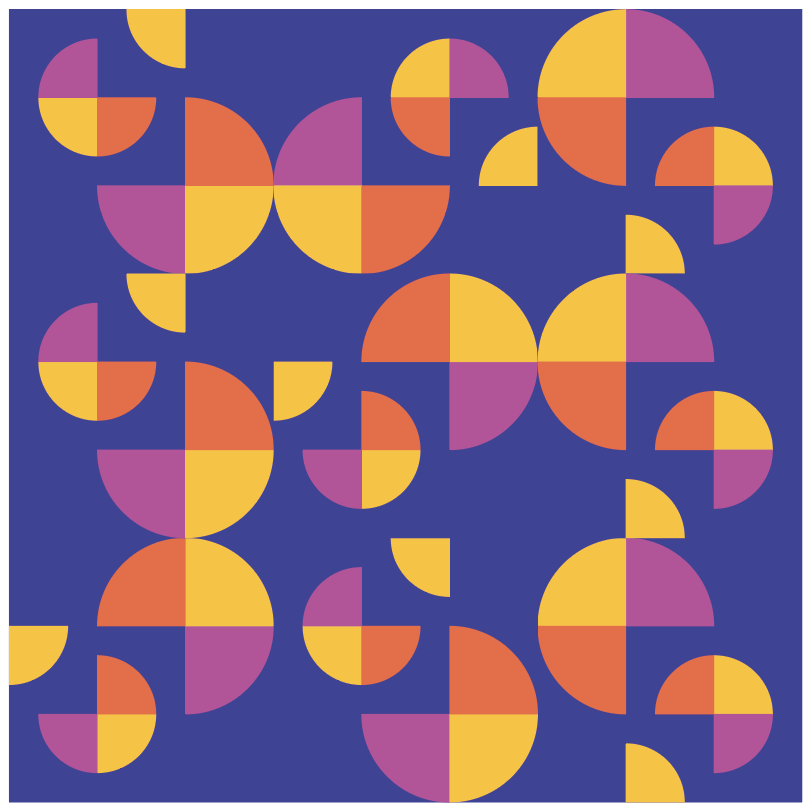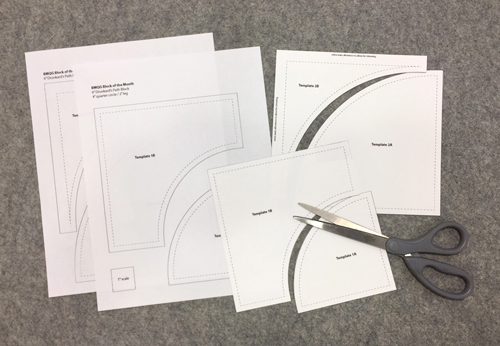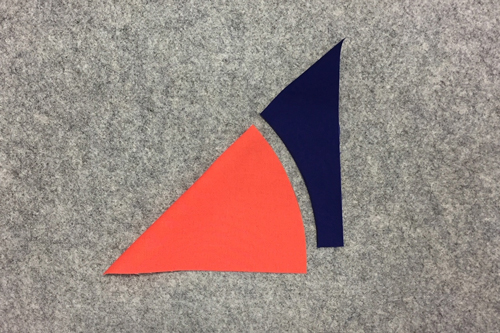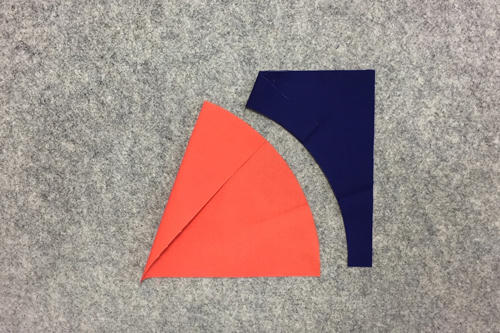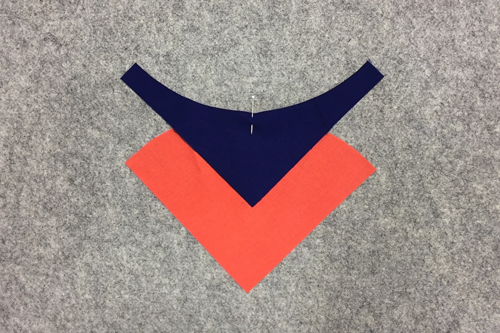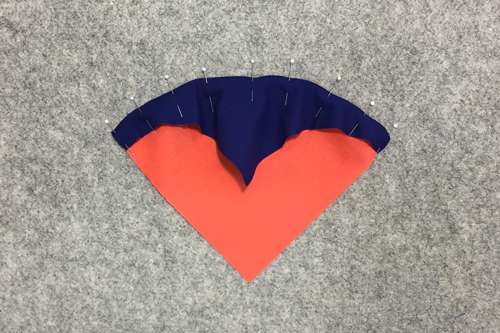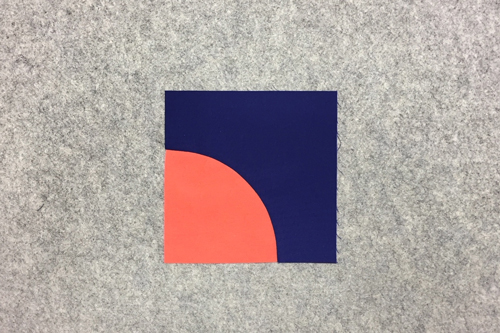Jul 14, 2020 | 2020 Block of the Month, Tutorial
From Barb Gippe’s April 2018 Evening Presentation. The full version with additional tips and information is available in the Member’s Area.
Foundation Paper Piecing Supplies
Ruler
Rotary cutter
Cardstock or index card
Flat head pins or glue stick
Fabric, thread, sewing machine
Foundation Paper Piecing Instructions
You will sew the pattern in number order. Begin by taking the first fabric and attaching it to the unprinted side of the paper with either a flat head pin or glue stick. Ensure that the entire piece is covered, (in this case, section 1) including an additional 1/4″ margin.
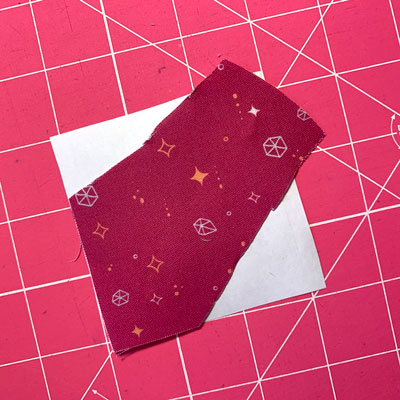
Place your card stock or index card along the printed line on the pattern you will be sewing (in this case you will be sewing on the line between sections 1 and 2) and fold over the printed paper (printed sides together). Use your rotary cutter to trim the fabric 1/4″ from the edge of your paper.
Set fabric 2 on top of fabric 1, right sides together at the trimmed edge of fabric 1.
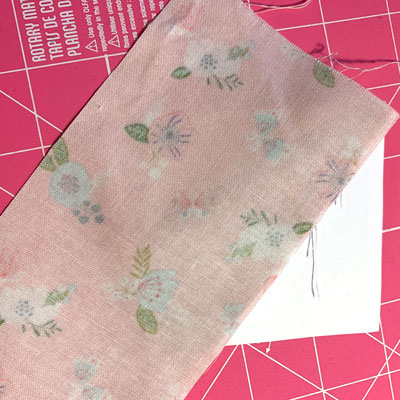
Make sure you have the fabric in the correct location. Test this by putting a pin in the two fabrics at a 1/4″ and flipping the fabric over as if it has been sewn. Make sure that fabric 2 covers all edges of the pattern, keeping in mind the 1/4″ margin.
Make sure your machine is set for a shorter stitch length and you have a 90/14 needle in.
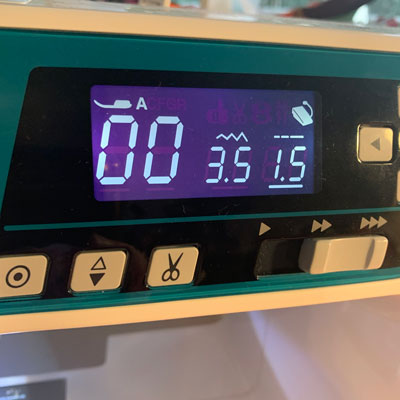
Set your pattern on your machine, printed side up, ready to sew on the line between the two sections (in this case, you’ll be sewing on the line between 1 and 2.) Remember to sew 1 or 2 stitches before and after the line.
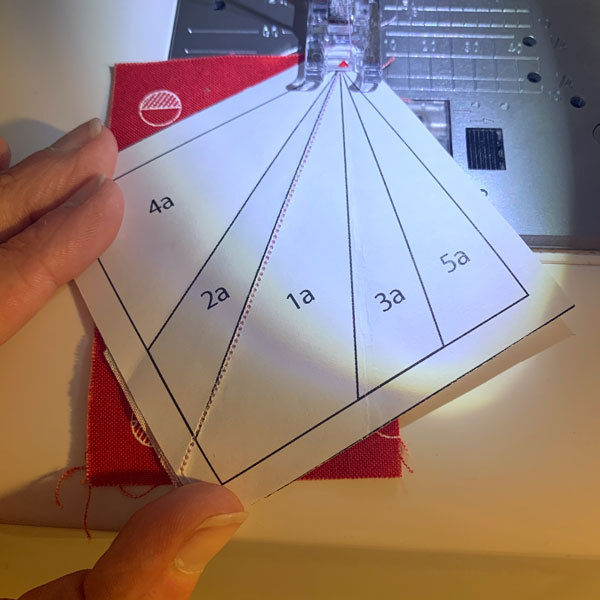
Open and press the right side of the fabrics.
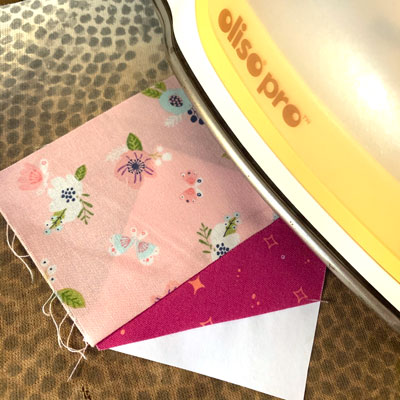
Continue the same way with each new piece of fabric, sewing them in numerical order.
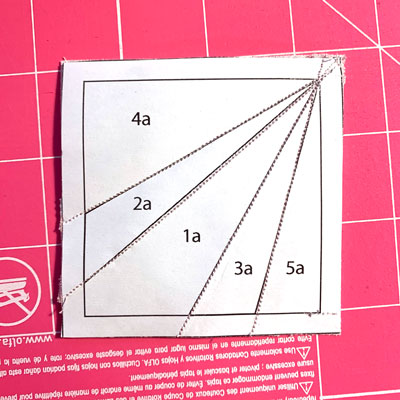
Tips For Joining Multiple Pieces
Some foundation paper piecing patterns are made up of multiple pieces that need to be joined together, this is the case with the July BOM block.
Take the two pieces you will be joining and place them right sides together. Take a pin and stick it through the corner of one piece through the other other piece’s corner.
-
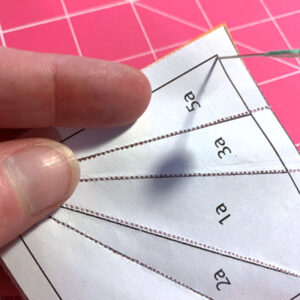
-
Pin goes through one pattern piece
-
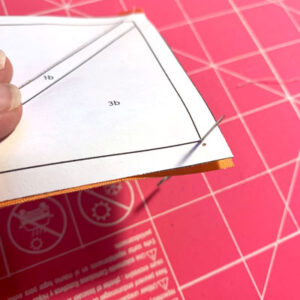
-
Pin comes through the other pattern piece
If necessary, reposition the pin until it is straight. When you begin sewing the pieces together, this ensures your pieces will join correctly.
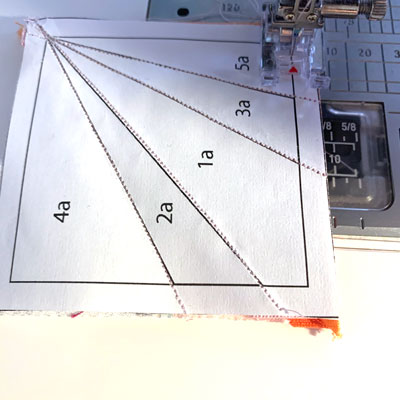
Sew the pieces together along the edge line, or just use a 1/4″ seam.
Jun 3, 2020 | 2020 Block of the Month

By Patty Heath
This month’s BOM is a great introduction to diamonds with a simple, modern block.

CUTTING INSTRUCTIONS

Fabric A – Teal
5″ x 15″
Fabric B – Geometric Print
5″ x 15″
Fabric C – Coral
6″ x 10.25″
2.75″ x 18.75″
BLOCK INSTRUCTIONS
Step 1 – Cutting Instructions
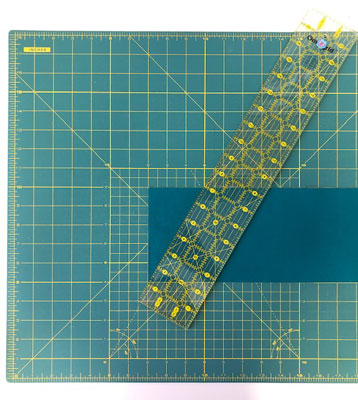
Cut diamonds from Fabric A. Align the 60 degree line on your ruler with the bottom of the strip of fabric. Make a cut from the bottom corner and discard the triangle. reposition the ruler to the right 5.875” keeping the 60 degree line on the ruler even with bottom of the fabric strip. Make a cut on the left edge of the ruler to complete one diamond. Move the ruler once more to the right 5.875” and make another cut to complete a second diamond. Repeat from the beginning with Fabric B.
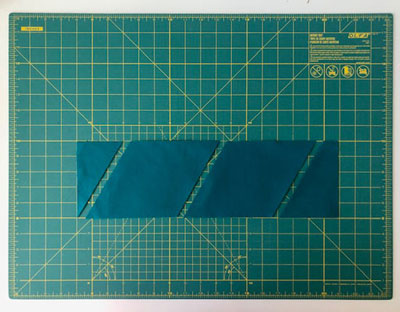
Step 2
Sew the diamond shapes together as shown in the photo. Press seams open being careful not to stretch the bias edges.

Step 3
Cut Fabric C and D rectangles diagonally as shown to create half rectangle triangles. Important note: If using a fabric with a discernible front and back, you must cut 2 of the 6×10.25″ pieces and cut them diagonally in opposite directions.

Step 4
Mark the center of the long side of each half rectangle triangle and pin to the corresponding seam of the diamond block as shown. Sew and press seams open. Trim block to 10.50” X 18.50”.
Step 5
Sew remaining Fabrics C and D to the corresponding sides of the block. These pieces have been cut slightly larger to allow for trimming the finished block to 18.50” square.

On Instagram make sure to use #bouldermqgbom20 and tag us @bouldermqg
May 2, 2020 | 2020 Block of the Month, Tutorial

By Rebecca Greco
This month’s BOM uses a variety of sizes of orange peel blocks to create a modern take on a traditional block. This block uses applique and can be done by hand or machine, whichever you prefer.
CUTTING INSTRUCTIONS
Fabric A – background
Cut (6) 4.5″ squares (trim to 3.5″)
Cut (3) 7.5″ squares (trim to 6.5″)
Cut (2) 10.5″ squares (trim to 9.5″)
Fabric B – large orange peel
Cut (2) from template 1
Fabric C – medium orange peel
Cut (3) from template 2
Fabric D – small orange peel
Cut (6) from template 3
BLOCK INSTRUCTIONS
Step 1 – Prepare Orange Peel Units
Using the orange peel applique tutorial, make 2 large 9.5″ orange peel blocks, 3 medium 6.5″ orange peel blocks, and 6 small 3.5″ orange peel blocks.
Step 2 – Layout Block
Layout the block as shown below.
Step 3 – Block Assembly
Sew the quarter circle units together into rows.
Sew the rows together into the block.
Trim block to 18.5″
On Instagram make sure to use
#bouldermqgbom20 and tag us
@bouldermqgMay 1, 2020 | 2020 Block of the Month, Tutorial
By Rebecca Greco
Orange Peel Applique Supplies
Thin, fusible interfacing
Scissors and//or rotary cutter
Fabric, thread, sewing machine
Orange Peel Applique Instructions
Step 1 – Make Templates
Print Template 2 at 100% (be sure the 1″ scale square on the template actually measures 1 inch when printed. Some printers don’t print a true 100%. Carefully cut out the templates on the printed lines. The largest orange peel will print on two pages. You can either tape together the pieces, or fold your fabric in half and use half of the printout.
Step 2 – Cut Fabrics
Cut one square of your backing fabric about 3/4″ larger than your final piece. After we will trim down the block, but this gives you room for error and ensures you will have enough space for your seam allowance.
Using the template, cut an orange peel from both the fabric and the interfacing. I just cut it out with scissors.
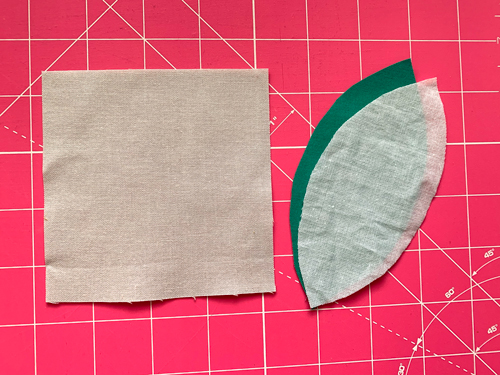
Step 3 – Sew the Orange Peel
Layer the orange peel fabric right side against the adhesive side of the interfacing. Sew a 1/4″ seam around the whole peel.
Step 4 – Cut Interfacing
Use scissors to carefully cut a slit into the interfacing. Make sure you pull the interfacing away from the fabric so you don’t accidentally cut the fabric. Increase the slit side as much as necessary to create a hole to turn the fabric.
Pull the fabric through the hole in the interfacing to turn it right side out. Use a chopstick, pen, or other tool to help get all the points.
Step 6 – Iron to Backing Fabric
Using the interfacing instructions, iron the orange peel onto your backing fabric.
Step 7 – Applique to Backing Fabric
Use your preferred applique method. I used machine applique, but this would be a great hand stitching project.
I used a small square quilting ruler and lined the diagonal along the orange peel. Make sure there is 1/4″ seam allowance on each side of the orange peel.
Apr 1, 2020 | 2020 Block of the Month, Tutorial
 By Anne Deister
This month’s BOM uses two different Drunkard’s Path blocks (as described in the Skill Builder tutorial) to create a modern, asymmetrical layout. The layout challenges you to match curves when aligning blocks and to have some curves come right to the edge of the block while others have negative space around them and float within the space.
By Anne Deister
This month’s BOM uses two different Drunkard’s Path blocks (as described in the Skill Builder tutorial) to create a modern, asymmetrical layout. The layout challenges you to match curves when aligning blocks and to have some curves come right to the edge of the block while others have negative space around them and float within the space.
CUTTING INSTRUCTIONS
Using Templates 1 and 2 provided in the Drunkard’s Path skill builder tutorial, cut the following pieces.
Fabric A – dark blue/violet
Cut (2) 6.5″ squares
Cut (4) from template 1B
Cut (3) from template 2B
Fabric B – yellow
Cut (2) from template 1A
Cut (1) from template 2A
Fabric C – orange
Cut (1) from template 1A
Cut (1) from template 2A
Fabric D – pink/purple
Cut (1) from template 1A
Cut (1) from template 2A
Step 2 – Layout Block
Layout the quarter circle units and the full squares as shown below.
Step 3 – Block Assembly
Sew the quarter circle units together into rows.
Sew the rows together into the block.
Trim block to 18.5″
QUILT LAYOUT
This block could be made in multiples to make a modern quilt. The illustration below demonstrates one possible quilt layout. The blocks are all identical. They are simply rotated to create a playful arrangement that produces a feeling of movement and interesting negative spaces.
There are so many things you can do with Drunkard’s path blocks. I hope you will explore more ideas on your own. I have a Quilt Along on my blog that uses the Drunkard’s Path block. Those posts can be found here. Look for number 5 on piecing for another basic tutorial on making the Drunkard’s Path block.
On Instagram make sure to use #bouldermqgbom20 and tag us @bouldermqg
Apr 1, 2020 | 2020 Block of the Month, Tutorial
By Anne Deister
Basic Curved Piecing Supplies
Templates. There are 2 template pages. One for each version.
Printer
Cardstock (recommended)
Paper scissors
Fabric scissors
Fabric, thread, sewing machine.
Quilters ruler and rotary cutter
Basic Curved Piecing Instructions
For the BOM, we will be using templates to make two different versions of the Drunkard’s Path block.
Version 1 is the more traditional form of the block where the quarter circle does not extend all the way to the edge of the block. It looks like this.
Version 2 is a quarter circle that fills the entire block. This version is made with extra background fabric and is then trimmed to size. When these blocks are sewn together, the quarter circle will go right to the edge of the block. It looks like this.
The following instructions cover the basics for making Version 2 of the Drunkard’s Path block using Template 2. The same steps are followed for Version 1/Template 1, however there is no need to trim.
Step 1 – Make Templates
Print Template 2 at 100% (be sure the 1″ scale square on the template actually measures 1 inch when printed. Some printers don’t print a true 100%. Carefully cut out the templates on the printed lines.
Step 2 – Trace Templates onto Fabric
Transfer template shapes onto fabric by tracing around the templates using a pencil or pen. These lines will not show so don’t worry about what pen you use as long as you can see the marks.
Step 3 – Cutting Instructions
Using scissors or a rotary cutter, cut both template pieces from your fabric.
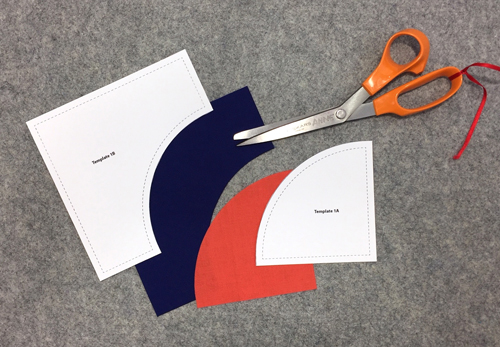
Step 4 – Marking/Pinning
Fold both the quarter circle and leg pieces in half to make a crease in the middle. Finger press or use an iron so you can easily see the crease.
Make two additional creases by folding each end in to match the crease in the middle.
With the quarter circle on the bottom, position the background piece on top, right sides together, aligning the center crease marks. Pin in place.
Match the other two crease marks and pin in place. Match the ends and pin in place. Add additional pins if you want. I prefer to add another pin in between each crease.
Step 5 – Sewing
With the background piece on top, sew using a scant 1/4″ seam allowance. Take it slow and ease around the curve. Lift your presser foot if necessary to smooth the fabric to avoid taking tucks. Press the seam toward the quarter circle for Template 2.
Step 6 – Trimming
For Version 2, trim to 6.5″ by aligning your ruler so there is a 1/4″ allowance beyond the edge of the curve.
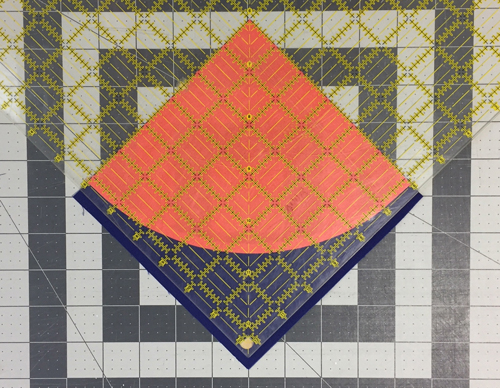
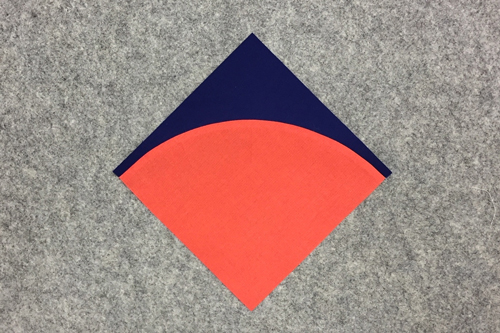
Repeat the same steps for Template 1. This block is to size with no additional trimming needed.
The finished trim size should be 6.5″.








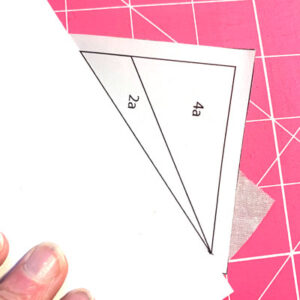
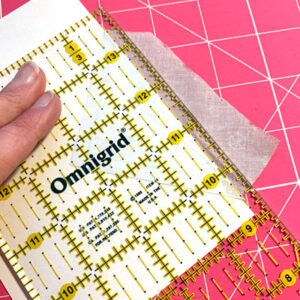
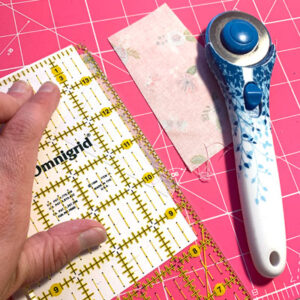








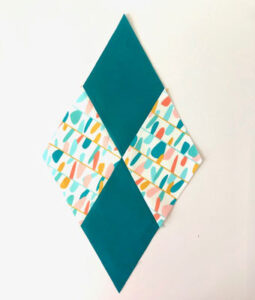











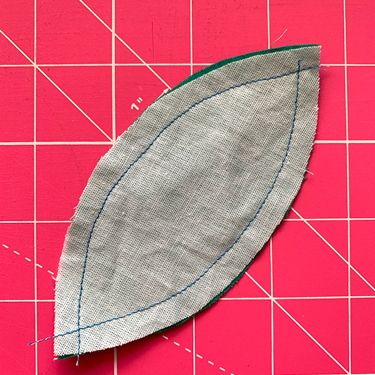

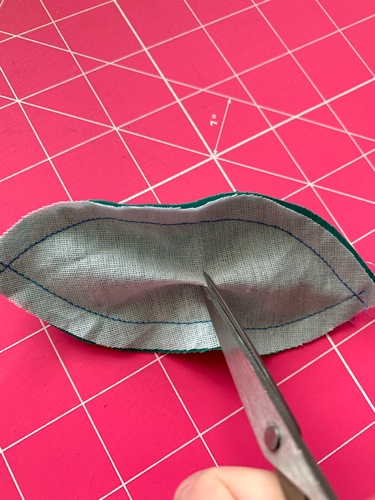
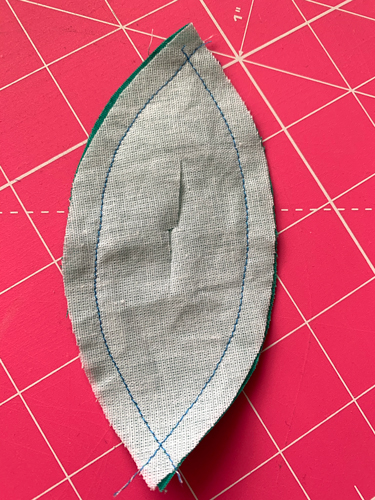

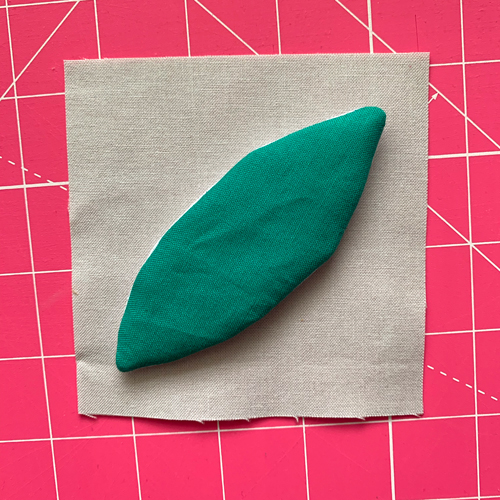
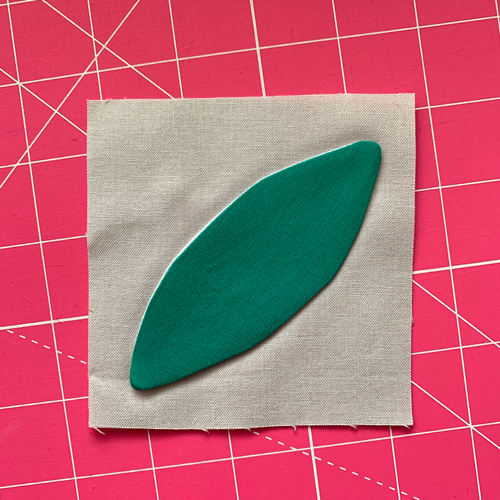

 By Anne Deister
This month’s BOM uses two different Drunkard’s Path blocks (as described in the Skill Builder tutorial) to create a modern, asymmetrical layout. The layout challenges you to match curves when aligning blocks and to have some curves come right to the edge of the block while others have negative space around them and float within the space.
By Anne Deister
This month’s BOM uses two different Drunkard’s Path blocks (as described in the Skill Builder tutorial) to create a modern, asymmetrical layout. The layout challenges you to match curves when aligning blocks and to have some curves come right to the edge of the block while others have negative space around them and float within the space.
